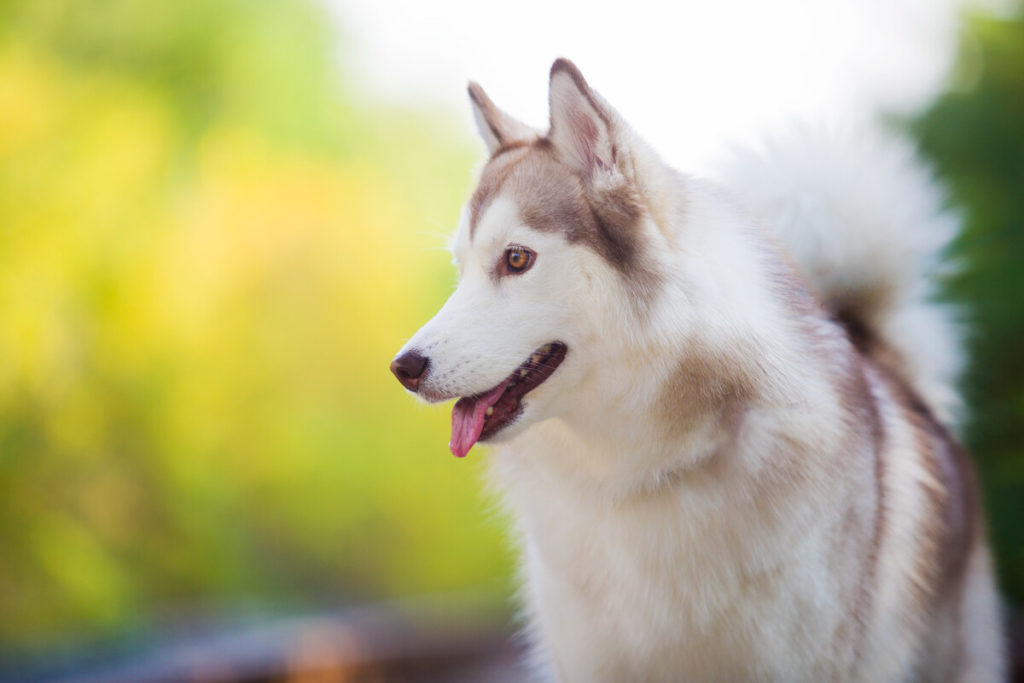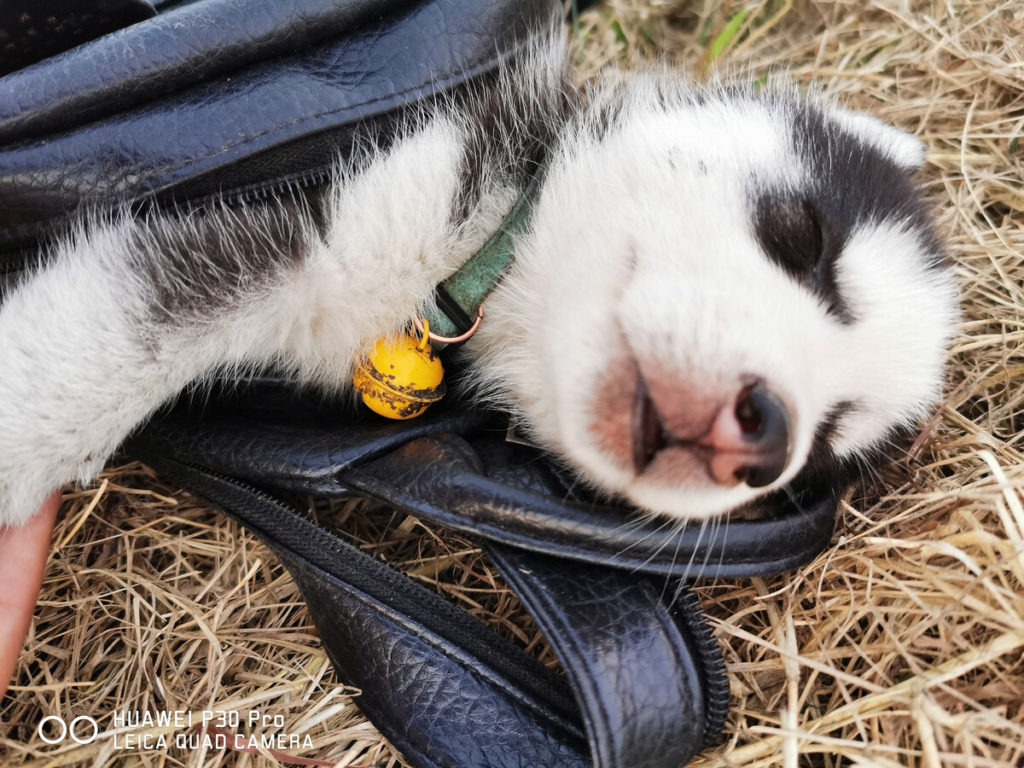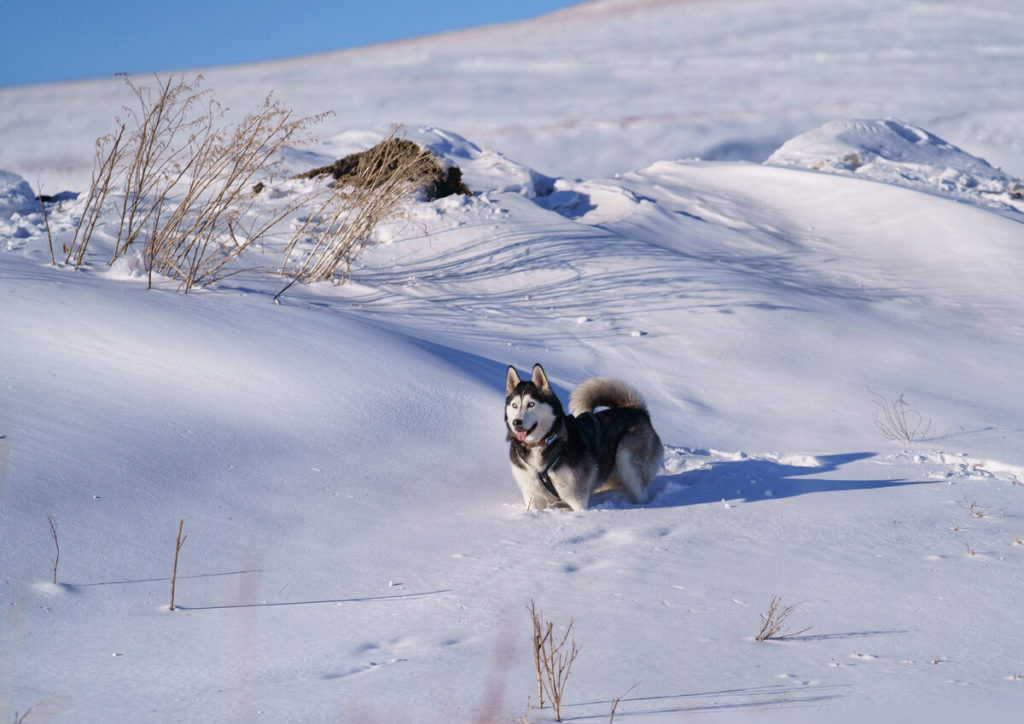Siberian Huskies are a very large dog breed with deep chest cavities that help to give them the wolf-like appearance we all love. Unfortunately, it also makes them more susceptible to a potentially life-threatening problem – canine bloat. As an owner there are several precautionary measures you can take to help prevent canine bloat in your Husky. These lifestyle changes are worth the extra effort to make sure your gentle giant lives a long and happy life, and to avoid unnecessary vet bills!
What is canine bloat?
Canine bloat, commonly referred to as just ‘bloat’, is a rapidly life-threatening condition that must be treated as an emergency. Bloat is caused by a dog’s stomach filling with gas causing it to twist and contort in a way that cuts off the blood supply to the digestive system, preventing the gas and any stomach contents from leaving.
Bloat can also affect other nearby organs, often the spleen which may twist and lose circulation, and may cause vital veins to become obstructed in a dog’s spine leading to blood being unable to travel back to the heart. If left untreated, bloat can quickly lead to a dog going into shock causing potential organ shutdown and ultimately death.
As you can imagine, bloat is extremely painful for a dog to experience and without medical intervention, it can kill within hours. It can affect any dog although large deep-chested breeds such as the Husky are at a greater risk. Even though bloat occurs rarely, every dog owner must be aware of the symptoms and the severity of the condition so they can act fast in an emergency.

What are the symptoms of bloat?
The symptoms of canine bloat will usually involve one or more of the following:
- Drooling
- Retching with no vomit
- A hard, swollen belly
- Tenderness in the abdomen when touched
- Excessive panting
- General signs of distress and restlessness
Symptoms can onset very quickly. if you suspect your dog has bloat you must contact your vet immediately.
How can you prevent canine bloat in your Husky?
Bloat can not be entirely prevented as it’s still unknown what exactly causes it, but there is some research that a few lifestyle changes can reduce the risk of your dog getting it. This list talks you through our five recommendations for keeping your Husky healthy during mealtimes.
Keep food and water dishes on the ground
This one is a tricky one for Husky owners as elevated food dishes have great benefits for larger breeds to prevent strain on their necks during eating. Unfortunately, research suggests that eating food at a higher stance means that your Husky will ingest more excess air with their meal compared to those who eat from ground level. As bloat is caused by excess gas in the stomach, it should be no surprise that the amount of air that is swallowed whilst eating should be minimised wherever possible.
We do understand the benefits of elevated food bowls and still personally advocate for them, particularly with elderly Huskies. As with everything in life, finding a balance is important and it is up to you to decide which potential health problem poses the biggest risk in your individual circumstances.
Exercise before or well after feeding
We all know that Huskies require a lot of exercise but did you know that the time you exercise them may impact their health? In the same way that you probably wouldn’t go on a run after stuffing yourself with a three-course meal, your Husky needs time to let their food settle in their stomach. Exercising them too soon after they’ve eaten increases the risk of your Husky getting bloat and its an easy fix to make.

You should wait at least an hour after they’ve had their meal to take them for their exercise, or ideally get it done before they eat. This may mean adjusting your routine slightly but it’s worth it to reduce the risk of bloat for your Husky.
Stick to the same food
We all know the old saying ‘variety is the spice of life’ but when it comes to preventing bloat it’s best to stay consistent! You might think that by changing up their food frequently you’re stopping them from getting bored and doing them a favour. After all, to us humans the thought of eating the same meal twice a day for years on end is not a pleasant one.
In reality, giving your Husky food they are unaccustomed to can upset their stomach and lead to them producing excess gases. Most of the time this simply results in some smelly expulsions and its perfectly fine to change their food every once in a while if they become picky towards their current brand. It is not recommended however to change their food brand simply because you think they might be bored. If you’re still insistent, we suggest looking for other flavours of the same food as the ingredients and composition differences should be similar enough to not cause any upset.
Trust us when we say that if you’ve found a food brand that your Husky likes, they will usually be more than happy to continue eating it for as long as you’ll provide it. In fact, we’ve known Huskies to eat the same brand of food their entire lives. Sticking to the same food is not only convenient for you but also keeps your Husky’s stomach at ease.
Avoid giving them human food
This follows on from the last point but feeding your Husky human food is not a good idea if you’re looking to avoid bloat. What we’re referring to here is treating them with scraps or leftovers of your own food. It may seem like we’re stating the obvious, but a dog’s stomach is not designed to tackle the same foods that we are and giving them treats may end up doing more harm than good.

As previously mentioned, feeding your dog foods they are not used to can lead to excessive gas being produced and this is especially true for human foods. Our food usually contains higher sugar and salt levels than what your Husky’s stomach can handle and does not react well in a dog’s stomach. Any treats you give your Husky should be specifically made for dogs and should be given in moderation.
Slow down their eating
Here’s the big one – making your Husky eat their meals slower. Huskies are undeniably food lovers and it can still surprise us how quickly their food disappears. Unfortunately, dogs that eat fast are five times more likely to get bloat than slower eaters.
It may seem impossible to slow your Husky down but there are a few tricks that we’ve tried and love. The first is to invest in a slow feeder bowl. These can usually be bought for around $15 (£12) and are dog bowls that have structures or mazes protruding from the bottom. The food can still be easily accessed but it will take your Husky a little more time to reach it all and forces them to eat smaller mouthfuls.
If you looking for a cheaper alternative, simply placing a large stone in the middle of your dog’s bowl is equally as good. It once again forces your Husky to take smaller mouthfuls as they need to eat around it, just make sure you give it a good clean and double-check no small parts can easily break off of it.

Final thoughts
Canine bloat is no joke and must be acted upon quickly to avoid the worst. Implementing these lifestyle changes can reduce the chance of your Husky getting it but educating yourself on the symptoms to look out for is one of the best things you can do for them.




